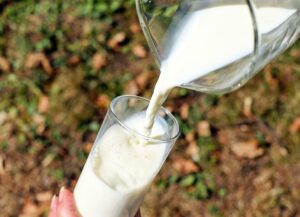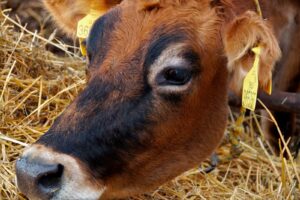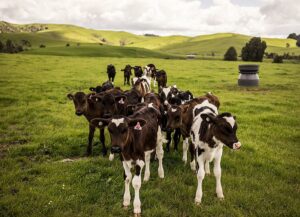Álvaro García
Functional foods are those that have additional properties beyond those of the nutritional effects of their nutrient composition. These effects can be exerted by modifying pathways with improvements in metabolic homeostasis and immune cells’ functions. Examples are cardiovascular disease, diabetes, obesity, cancer, arthritis, non-alcoholic fatty liver disease and others.
More recently, attention has been placed on the effects of dietary polyunsaturated fatty acids on the human immune system response. Linoleic and alpha-linolenic acids are essential unsaturated fatty acids that are converted to eicosapolyenoic acids including arachidonic acid, and are precursors of bioactive eicosanoids such as prostaglandins, thromboxanes and leukotrienes.
Milk is thus a natural candidate to be considered among these “functional foods”, since it contains these bioactive compounds and has the potential of modifying them through changes in dairy cow nutrition.
Importance of conjugated linoleic acid
Milk contains cis-9 trans-11 conjugated linoleic acid (CLA) which has been the subject of much research. The antiatherogenic, anti-obesity, and anti-carcinogenic roles of CLA are recognized, and so is the possibility of modifying its concentration in milk. Dietary linoleic acid from oil-rich feeds such as soybeans is bio-hydrogenated in the rumen of the cow to CLA.
The addition of these feeds to the dairy cow diet, however, can result in microbial population and fermentation changes that can have negative effects on fiber digestibility, and as a result feed intake.
Research has also shown that milk fat depression occurs when mammary milk fatty acid production (de novo synthesis) is inhibited or reduced. This happens when the normal pathways of rumen biohydrogenation are altered, through the production of fatty acid intermediates that inhibit milk fat synthesis such as trans-10, cis-12 CLA. As a result, it is very important to take into consideration the amounts and the bioavailability of those supplementary fat sources.
What is soy sauce oil?
The soy sauce industry leaves a byproduct called “soy sauce oil”, which is currently mostly used in biodiesel production, but which has a potential as feed ingredient. It is obtained after compressing the whole soy sauce mash, is rich in linoleic acid, and has an overall composition very similar to that of soybean oil.
Research has shown that 1 kg/day of soy sauce oil dosed in the rumen of dairy cows increased 5.9 to 8.8 times the CLA concentration in milk. The right amount to exerts this response without significantly altering rumen fermentation needs to be better defined.
To this effect, a recent experiment (Konno et al. 2020) was conducted with eight primiparous Holstein cows weighing 574 kg and 116 days in milk and fitted with rumen cannulas. The treatment period was 28 days, with 21 days for adaptation and 7 days for data collection. Treatments were: 0, 200, 400, or 600 g/day of soy source oil administered twice a day directly into the rumen.
The cows received a total mixed ration (TMR) once a day ad-libitum (110% of expected intake), consisting of 50.0% grass (timothy) silage, 37.0% corn, 11.0% soybean meal and 2.0% di-calcium phosphate on a dry matter (DM) basis.
Effects of soy sauce oil on feed intake
Results showed that as soy oil increased in the diet, total dry matter intake (DMI) and grass silage intake/total DMI decreased linearly. Total fat intake/total DMI and total digestible nutrient (TDN) intake/total DMI linearly increased while protein intake/total DMI was not changed. TDN requirement and intake were constant between oil treatments.
Soy sauce oil and milk yield and composition
Soy oil concentration in the diet had no effect on milk production (from 24.6 to 26.0 kg/day) or fat-corrected-milk (FCM) yield, with a trend to a lower value with 600 g/day of oil. As reported in the literature milk fat concentration decreased linearly as soy oil increased in the diet with the lowest value reported at 600 g/day of oil supplementation. The rest of the milk components (protein, lactose and solids-not-fat) were not affected by oil supplementation.
How soy sauce oil affects ruminal fermentation parameters
When the oil was fed at 600 g/day, ammonia, total VFA, acetate, and butyrate were consistently lower than those observed with all other treatments; pH, however, was higher.
Acetic acid concentration with 600 g/day oil was always lower which could be the effect of a reduction in fiber degradation. This decrease in acetate concentration across sampling points was in average 10.8%; no changes in propionate concentration were observed with oil supplementation.
The maximum ruminal concentrations of linoleic acid, trans-11 vaccenic acid (vaccenic acid), and CLA, following administration was observed at 0.5 h for linoleic acid, 4 to 5 h for vaccenic acid and 0.5 h for CLA. The maximum concentration for each increased with oil supplementation.
Linoleic acid concentration was the highest at 150-250 μg/mL, followed by vaccenic acid at 2 to 10 μg/mL, and CLA at 0 to 1.6 μg/mL, with all three increasing linearly with oil addition.
The concentrations of vaccenic acid and CLA in total fatty acids in milk increased with soy sauce oil, while that of linoleic acid remained unchanged.
Conclusions
Result of this experiment suggest that the concentration of beneficial fatty acids in milk can be changed by feeding up to 400 g of soy sauce oil. It appears that above this amount there would be detrimental effects on fiber digestibility, and it would have no benefit of any additional fatty acid production in milk.
Regardless of the supplementation amounts other sources of polyunsaturated fatty acids in the diet need to be considered, in what is known as the rumen unsaturated fatty acid load (RUFAL). At the 600 g of soy oil supplementation the diet in this experiment contained 7% fat (the majority being oil), consistent with the highest amount suggested for dairy cows. In a cow eating 25 kg of diet DM, this would represent 1.75 kg of fat. With the feedstuffs included (half corn and soybeans), this would represent more than 800 g of linoleic acid per day, clearly exceeding the daily recommended values. Increasing dietary C18:2 intake from 143 to 760 g/day has been shown to linearly decreased intake, 4% FCM, milk fat concentration, and milk fat yield.
Ingredients containing high concentrations of linoleic acid should be limited in lactating cow diets when the objective is to maximize milk production performance.
Reference
Konno, Daiji & Takahashi, Masanobu & Osaka, Ikuo & Orihashi, Takenori & Sakai, Kiyotaka & Sera, Kenji & Obara, Yoshiaki & Kobayashi, Yasuo. (2020). Effects of ruminal administration of soy sauce oil on functional fatty acids in the rumen, blood and milk of dairy cows. Asian-Australasian Journal of Animal Sciences. 34. 10.5713/ajas.19.0913.
© 2021 Dellait Dairy Knowledge Center. All Rights Reserved.








